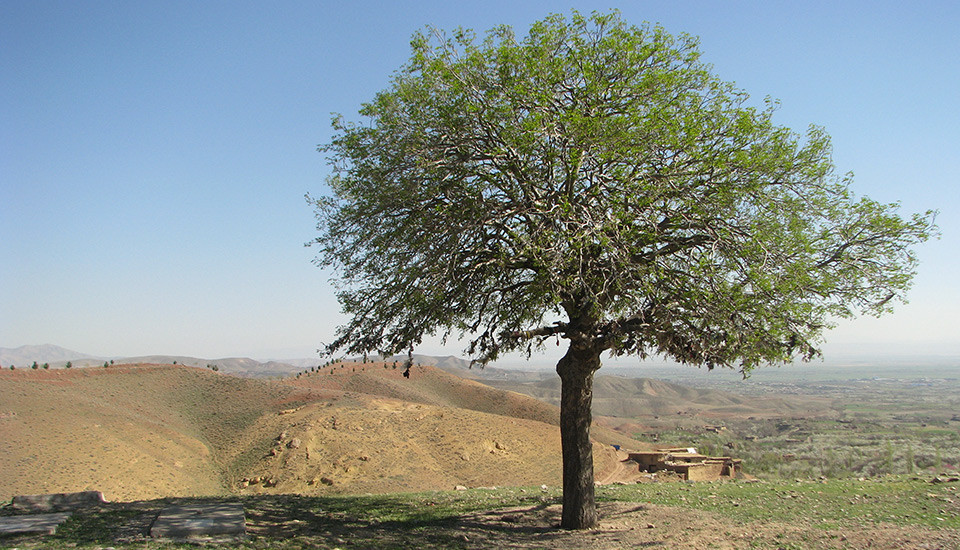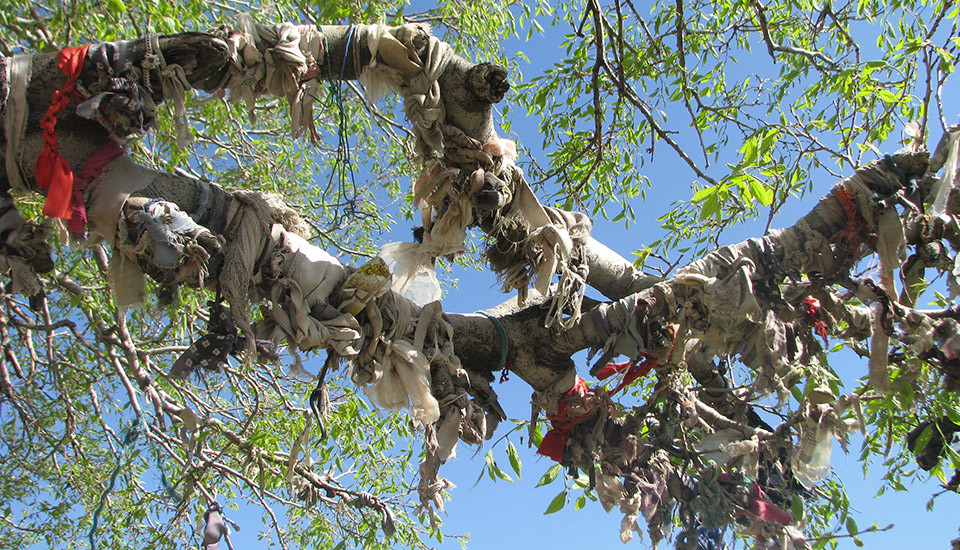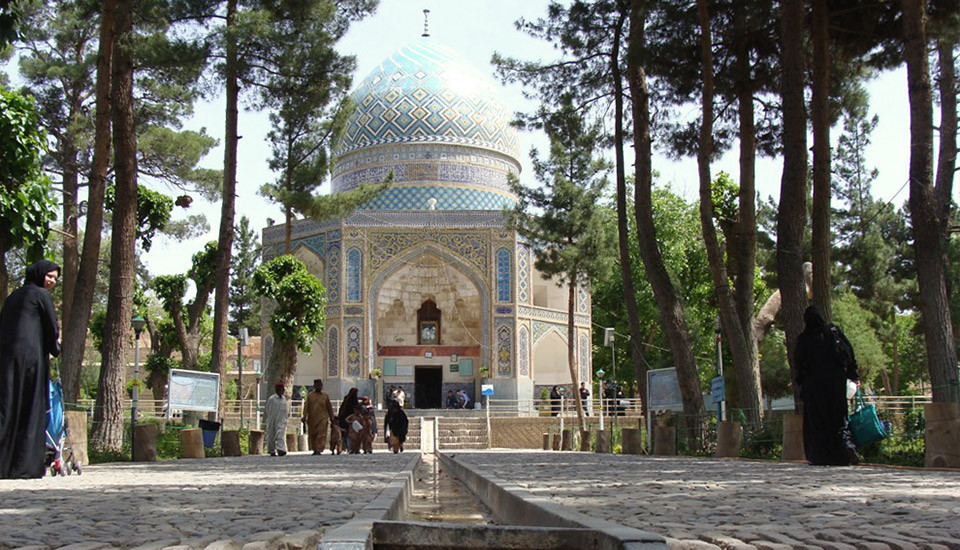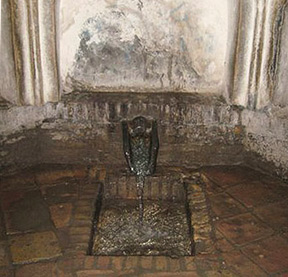Neyshabur to miasteczko w północno-wschodnim Iranie. Duża część z nich znajduje się na rozległej równinie otoczonej wzgórzami i górami. Istnieją różne święte obiekty przyrodnicze w gminie, od świętych drzewach i sprężyn do świętego świętych i święte głaz ogrody. Powierzchnia mieści kilka endemicznych gatunków roślin i zwierząt. It also contains protected areas and ecotourist destinations such as waterfalls, Sprężyny, rzek i wzrok cechy geograficzne, takie jak szczyty górskie. The climate is semi arid to dry with an average annual rainfall of 300 mm.
In spite of the fact that these sites are protected by local communities, their future is threatened by urbanisation, population growth, infrastructure development and tourism.
Chroniony
Kuratorzy
Miejscowi ludzie szanować naturalne cechy, jak są one zakorzenione w ich religijności. Qadamgah w Neyshabur na przykład, jest perski ogród, gdzie natura została nasycona wartościami duchowymi. Zawiera dwór, drzewa, Baseny i strumienie. Jedna ze ścian dworu zawiera czarnego kamienia, w którym dwa ślady zostały wycięte. Ludzie wierzą, te odciski należą do 8 Imam szyitów, mężczyzna przywódca duchowy uważany potomkiem Muhammed, bosko powołany do kierowania ludźmi. Qadamgah słowo oznacza ślad i odnosi się do tej narracji.
Qadamgah’s history as a sacred site dates back to the pre-Islamic period. Though its original purpose is unknown, it is historically linked to the Sassanid prince Shahpour Kasra, as well as to Imam Ali and Imam Reza. Word goes that in 921 AD Imam Reza stopped at the garden on his way from Medina to Marv. The instant he wanted to perform his ablutions, a spring welled out of the earth. The spring has been regarded sacred ever since and people believe this water has healing properties.
Some plane trees (Plantanus sp.) have been actively conserved for centuries. Plane trees in Iran have been regarded as sacred for a long time because of the shade they offer, their largeness and their green appearance. All over Iran some plane trees have been kept alive for centuries. Legends and beliefs about some specimens have caused people to stay away from them. A long lived plane tree in a village of Neyshabur, na przykład, is conserved by local people because they believe that a man once lost his family due to the breaking of its branches.
Local people still conserve lesser-known sacred sites which have no legal protection. Wartości takich miejsc uczy się młodych pokoleń i ceremonii religijnych i praktyk odbywa wspólnotowo, tak jak były one przez wieki. W ten sposób, następne pokolenie uczy się je chronić.
Chociaż nie jest formalna strategia zarządzania, people tend to protect their sites. Some implement short term measures at a local level. Among a wide variety of plans that are carried out for example, a park has been established around a wish tree and tourist services have been developed there.
Akcja
Local people and religious institutions continue their age-old practices. The local offices of Cultural Heritage, Handicrafts and Tourism register long-lived trees as national natural monuments. National natural monuments are relatively small, interesting, unique, exceptional, unconventional and irreplaceable phenomena of plant and animal collections having scientific, historical or natural significance. Protective measures in these areas guarantee their sustainable non-commercial use.
There is also a national plan for inventory and conservation of long lived trees under supervision of the lasy, Range and Watershed Management Organization of Iran. Recent research by Maryam Kabiri draws the attention to the significance of the spiritual values that these and other sacred sites have in relation to nature conservation.
Polityka i prawo
Prawodawstwo Iran nie ma wzmianki o świętych naturalnych dotąd. Niektóre święte obiekty przyrodnicze zostały oficjalnie zachowane, ponieważ znajdują się na obszarach chronionych lub w krajowych pomnik. Inne zostały specjalnie zarejestrowany jako krajowych pomników przyrody. Dziedzictwo kulturowe i dział organu ochrony środowiska mają do powiedzenia w sprawie ochrony narodowych zabytków przyrody. Proponują one głównie rzadkich flory i fauny lub niezwykłych formacji lądowych, pejzaże czy nawet starych drzew. Są one następnie objętych ochroną w ramach wyznaczenia odpowiedniego obwodu.
Koalicja
Some sacred sites in the area are under supervision of Endowments and Charity organizations (responsible for endowments and sacred places such as mosques and shrines) and a trustee board of local people. The Cultural Heritage, Handicrafts and Tourism Organization is responsible for registration and management of historical monuments and national natural monuments.
Qadamgah, na przykład, has been registered in this way, but it is also under supervision of endowments and charity organization of Iran and of the local trustee board. As in the case of Qadamgah, when a site has both cultural and spiritual values these organisations cooperate in the conservation and management of the site.
Narzędzia ochrony
Criteria for conservation have been set up and these criteria have led to maps of areas in the township of Neyshabur which are in need of prioritized conservation. Some recommendations have additionally been formulated in this thesis, which may help with the initial steps for planning political agenda and developing criteria and indices of a national natural monument such that takes spiritual values into account.
Wyniki
Sacred natural sites as a part of bio cultural diversity have been protected for centuries by local beliefs and values. Nowadays these sites are threatened for different reasons. If they are to survive, Obecne środki muszą być obsługiwane przez ochronę prawną. W tym celu, przyjęcie zintegrowanego podejścia opartego na wspólnych kryteriach i polityk w dziedzinie przyrody i kultury mogą odgrywać kluczową rolę w zakresie ochrony świętych naturalnych. Kabiri Hendi (2011) zidentyfikować takie kryteria dla ochrony świętych naturalnych terenów w gminie Neyshabur.
- Bahar, M. (1995) From myth to history. Cheshmeh Publication, Tehran, Iran.
- Daneshdoost, J. (1992) Persian Garden. Asar Journal, Vol.12: 48-52.
- Kabiri Hendi, M. (2011) The land evaluation for conservation of natural sites with spiritual values, a case study of Neyshabur Township. MSC thesis at Tehran University, Karaj, Iran.
- Taheri, A. (2009) Neyshabur Tourism Guide. Abarshahr, Mashhad, Iran.
- Pakdaman, B (2005) Qadamgah Garden Complex, Amagazine, issue7:86-93.







